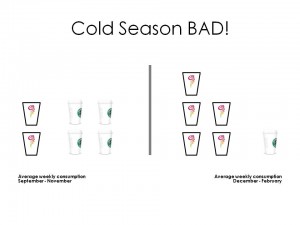November26
On 2010/11/23 at 10:06am Teacher submitted the following comment on My Observation of Mr. Ferlazzo’s Theory of Knowledge Class Fall 2010:
It is a horrible program, IB, and Ferlazzo is a left wing nut.
This is merely a way to get kids used to the idea that Hitler’s policies (similar to Obamas) are good and conservatism is bad or what your parents values are are bad.
This course is part of the UN brainwashing of our kids using the IB program and I refused to teach world government when it was asked of me because it’s treason.
You have violated the comment policy on this blog. My comment policy can be viewed here, and states:
Constructive input
I am a writer of strong opinions, and sometimes I attract the like in comments. I prefer a fruitful dialogue, and not comments that are designed to attack or just muddy the issue being discussed. If you fall into that category, your commentary will cease to appear.
Your comment is not constructive for the following reasons:
- It relies on personal attacks on Mr. Ferlazzo by referring to him as “… a left wing nut”. That comment is a personal attack, and is especially not appreciated as his students are commenting here and that statement is disrespectful.
- Your reference to Hitler’s policies being similar to Obama’s is hyperbolic, and violates common understandings on the Internet (and especially on edublogs) that comparing folks to Hitler in the manner that you have is inflammatory and not constructive (http://en.wikipedia.org/wiki/Reductio_ad_Hitlerem).
- The whole of your comment is intended not to dialogue, but is like yelling in a meeting when you disagree with the speaker.
March23
On the plus side, this pink slip business has helped me parlay my pain, into some really great blog stats. I was averaging about 100 hits a day for a while there. I also found a new teacher blog from one of the TFA folks who commented on my post. Ms. S is working at a Lakota reservation school teaching English, and has a really lovely blog about that experience. It’s worth a read. Her recent post about the untimely death of a student resonates for those of us teaching “at-risk” youth. It’s also interesting for those of you following concerns about maintaining tribal languages that’s coming up as a bi-lingual concern.
October9
Let’s see where things stand today from Jon Becker, Still Separate, Still Unequal? (Final Thoughts) (Education – Change.org)
- Today, nearly three out of every four African-American students in the U.S. attends a school that is majority-minority.
- 1 out of every 6 African-American children in the United States now attends a school where less than one percent of the population is white.
- In 1998, African-American students were 59% more likely to be identified as emotionally disturbed than Caucasian students.
- As of 2007, in the state of Virginia, African-American students were 54% more likely to be identified as disabled than other students.
- African-American and Latina/o students are less than half as likely to be enrolled in gifted and talented educational classes and programs as Caucasian students.
- While Internet access in schools and classrooms is consistently good and equitable, access to computers generally is slightly inversely related to the percentage of students of color in schools.
- The frequency with which African-American students use computers in schools is at least as high, if not higher, than other students. However, African-American students are much more likely to use computers to practice or drill on math facts than White students.
Still Separate, Still Unequal? (The Case of Special Education) (Education – Change.org) had the most disturbing findings to me:
The following table comes from the National Research Council report. The data indicate significant overrepresentation of African-American students in the emotional disturbance category. In 1998, African-American students were 59% more likely to be identified as emotionally disturbed than Caucasian students.
and later,
Furthermore, and most striking, according to the NAACP (2001), “and contrary to the expectations, is the finding that the risk for being labeled ‘mentally retarded’ increases for blacks attending schools in districts serving mostly middle-class or wealthy white students” (p. 18).
So, basically, if your black you’re more likely to be pathologized, and if you happen to be in a largely white/middle-class school, you’re not any better off (I’d imagine it might be even worse there, but that’s just me).
Whether we integrate, or continue to re-segregate, I feel there will be little improvement if we continue to treat these students as though they are the pathology, whether we do this as a conscious or unconscious policy.
Below are links to the entire series from Dr. Becker:
September10
I’m moving my student blogs to edublogs campus, and changing the approach. Instead of doing blogs by “grade-level” I’ve set up the blogs to follow the students from one grade-level to the next. The blogs are titled for the year students will “leave” Oak Ridge Elementary for middle school. They are:
Class of 2012 for this year’s fourth graders;
Class of 2011 for this year’s fifth graders;
Class of 2010 for this year’s sixth graders.
Using the easy export/import tool in WordPress (so simple, I was able to walk Larry Ferlazzo through it), I’ve moved the prior year’s posts over to the new blogs, so that students can look back through their previous work.






Recent Comments